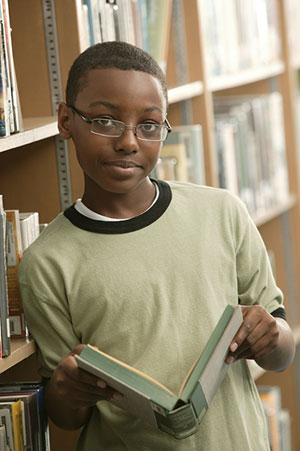 Over the course of seven weeks and two separate visits to an elementary school in Kampala, Uganda, I learned that the gift of books is only the first step toward helping students become readers. When I brought books into their classrooms, everyone—including the teachers—was excited and grateful to receive them. But as there was no infrastructure in place for their regular use, after the initial introduction, the books were not made available to the children.
Over the course of seven weeks and two separate visits to an elementary school in Kampala, Uganda, I learned that the gift of books is only the first step toward helping students become readers. When I brought books into their classrooms, everyone—including the teachers—was excited and grateful to receive them. But as there was no infrastructure in place for their regular use, after the initial introduction, the books were not made available to the children.
Books, I came to understand, were viewed as valued gifts, an extraordinary rather than an ordinary part of school learning, and were held in locked cabinets.
Addressing this issue became my challenge. How could I integrate books into the school program in a sustainable manner, considering the pressures of the state-mandated curriculum and focus on exam preparation?
Thanks to the global literacy fund of the British Columbia Council of the International Literacy Association, I purchased 22 contemporary, colorful, attractive nonfiction books to enhance the curriculum. A Ugandan teacher provided me with a list of topics in the academic subjects they needed to cover for exams: electricity, magnets, bones, the brain, the digestive system, cell division, and the Rift Valley.
I also helped students develop the skills they needed to learn from books. To provide an example, I filmed sixth-grade students in a Vancouver school as they browsed, read, and talked about library books.
With my books and videos, I returned to Kampala for the third time and put into action the following plan:
- I introduced new nonfiction books one by one, class by class. The class practiced how to choose a book and how to share what they found interesting about the book.
- I showed the demonstration videos of children interacting with library books. The class discussed the video afterward, and students were encouraged to ask questions.
- I helped create a timetable. After consulting with the teachers, I scheduled a detailed book circulation system into the weekly timetable. The collection, which included fiction from my first trips along with the new nonfiction books, traveled from class to class twice a week for 30 minutes.
I happily witnessed the effect I was hoping for. The books were regularly distributed to students with sufficient time allowed for reading and discussion with one another and their teachers. The books were freed from locked cabinets and they became a regular part of every student’s school experience.
My hands-on experience as a book donor progressed from simply providing books to consulting with teachers and children to integrate classroom libraries into the daily curriculum. I learned that the implementation of resources is a key factor in improving literacy.
How did the learners do on those critical final exams? Very well, I am pleased to report.
 Honey Halpern has taught for more than 30 years in elementary and secondary schools and faculties of education in Ontario, Quebec, and British Columbia, Canada. Her experience has mainly been with reading programs and courses. Most recently she has been helping out in a school in Kampala, Uganda, where she works with the children and their teachers to improve reading and writing skills.
Honey Halpern has taught for more than 30 years in elementary and secondary schools and faculties of education in Ontario, Quebec, and British Columbia, Canada. Her experience has mainly been with reading programs and courses. Most recently she has been helping out in a school in Kampala, Uganda, where she works with the children and their teachers to improve reading and writing skills.